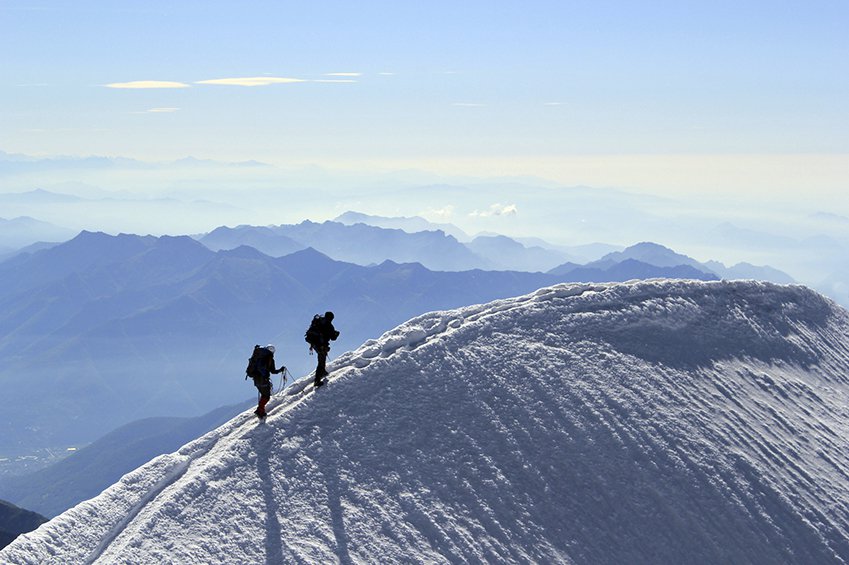
This article is the first in the Active Vacation Series.
One person’s finish line is another’s mountain summit. Mountain climbing and hiking is one of the fastest growing sports and it’s easy to understand why.
It combines the motivation of a challenge with the scenery of the great outdoors and requires travel to beautiful destinations all over the world.
I’ve climbed on the steps of the ancient Inca Trail to Machu Picchu, along the slopes in New Zealand made famous in the Lord of the Rings movies, and most recently to the summit of Mount Rainier in Washington. The ironic part is I live in the flatlands in the Chicago area where the elevation level peaks at about 420 feet above sea level.
You don’t need to live in the mountains, to train to hike or climb them. All you need is a good variety of workouts that focus on strength, incline training, climbing, endurance, and stamina.
Here’s how to put together a training plan to climb every mountain.
Get strong
Strength training is on the top of the list because it is just that important. Whether you’re taking a total body strength class at the gym, pumping weights, performing body weight exercises or following a yoga and pilates class online, weave strength into your weekly regimen at least 2-3 times per week. Exercises like planks, push ups, wall sits, single leg squats and lunges, and bridges all help to build balanced strength and stability in the muscles and joints that will work hard to get you up and down the mountain.Incline Training
What goes up also goes down while trekking in the mountains, and simulating these inclines on a treadmill with your pack at weight and boots or shoes is an effective way to prepare for your journey. Treadmill climbing is a useful partner to trail workouts, and a wonderfully convenient means to train during a busy work week. In addition to my outdoor trail hikes, I used the treadmill twice per week and built up my pack weight slowly over time. We carried forty pounds up Mt. Rainier, and it was useful to up my weight during shorter hikes indoors to allow my body time to adapt to the load before I did so outside on the trails. One of my favorite treadmill mountain climber workouts went like this. Please note: I built up to this over time. If you want to try this workout it is wise to start on the low end of the incline percentage (2-8%) and slowly build up (6-15%). Warm up: 10 minutes easy at first, then progress to brisk effort Repeat the following 2-3 times:- 3 minutes at 6%, followed by 2 minutes at 0% at a brisk pace
- Continue to repeat this 3/2 interval and increase the incline by 1% every interval to 7,8,9, 10-15%.
- After you complete one full set, repeat it again.

